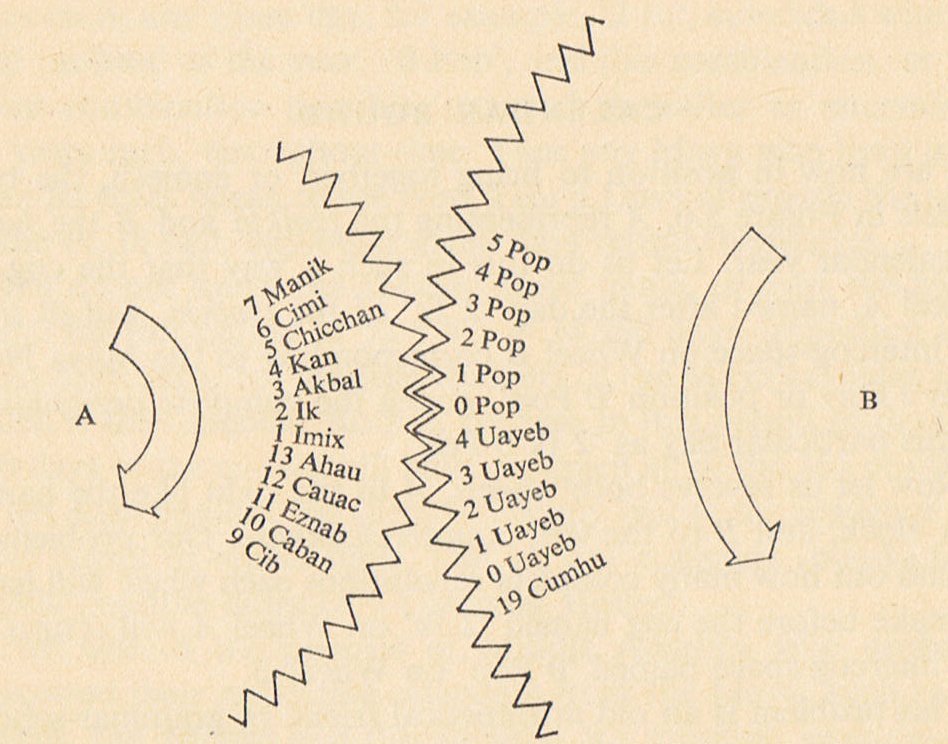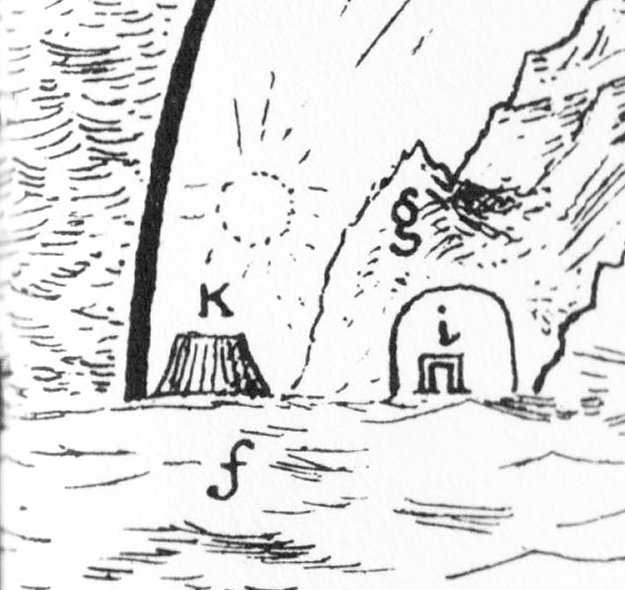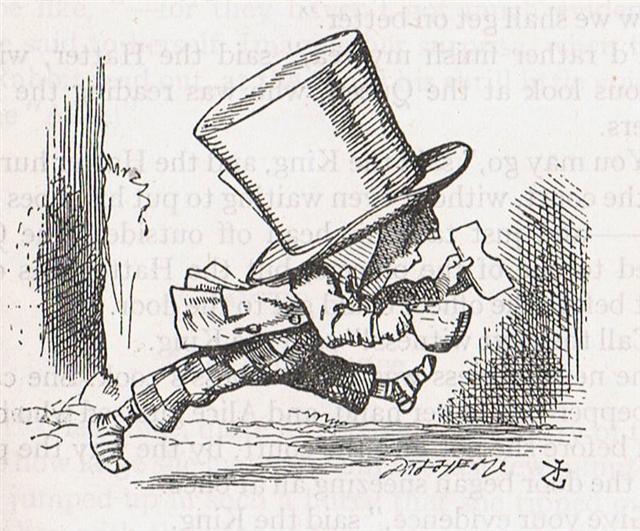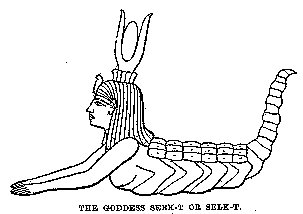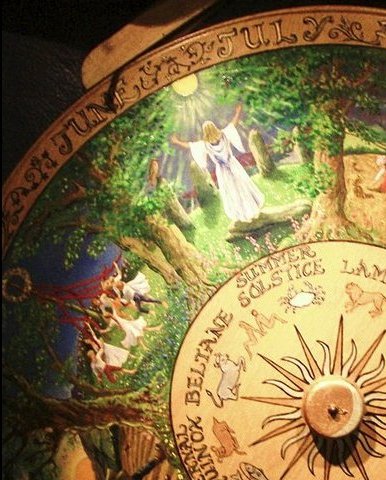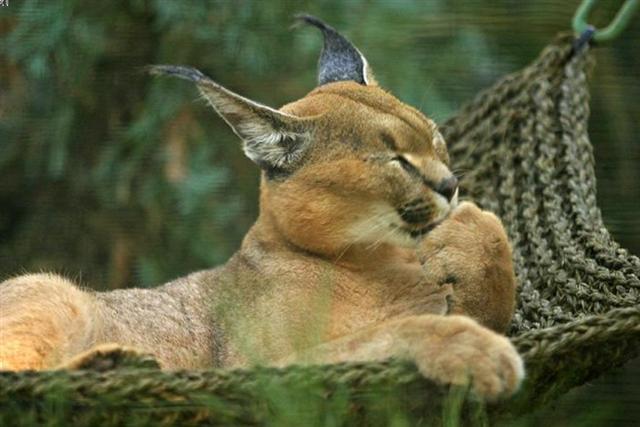27. In the Mayan list of 13 day signs Night (Akbal) comes after Light (Ik).
At first this seems peculiar, because we are normally thinking about how light is being brought about by switching on a light in order to dissipate the shadows. ... Marduk, die Frühsonne des Tages und des Jahres, wurde eben wegen dieses seines Charakters der Lichtbringer am Weltmorgen. Marduk, der die leblose, chaotische Nacht, die keine Gestaltungen erkennen lässt, besiegt, der den Winter mit seinem Wasserfluten, den Feind des Naturlebens, überwindet, wurde der Schöpfer des Lebens und der Bewegung, der Ordner des Regellosen, der Gestalter des Unförmlichen am Weltmorgen ... Die Sonne, die des Morgens das Weltmeer durchschreitet und besiegt und das Licht bringt, lässt aus dem Chaos der Nacht zuerst den Himmel, dann erst die Erde hervortreten, spaltet das gestaltlose Reich der Nacht in die zwei Hälften, den Himmel und die Erde ...
The basic idea however is the contrast. Wherever there is light there will also darkness. Thus the opposite should also be true. But in a game of chess the white player (as the face of the Full Moon) will always begin. And the Mad Dog was presumably one of the pieces on the board of the game. ... A young Egyptian called Setna (or Seton Chamwese) wanted to steal the magic book of Thot from the corpse of Nefer-ka Ptah, one of the great Egyptian gods, who was often portrayed as a mummy. Ptah, however, was awake and asked him: 'Are you able to take this book away with the help of a knowing scribe, or do you want to overcome me at checkerboards? Will you play 'Fifty-Two'?' Setna agreed, and the board with its 'dogs' (pieces) being brought up, Nefer-ka Ptah won a game, spoke a formula, laid the checkerboard upon Setna's head and made him sink into the ground up to his hips. On the third time, he made him sink up to his ears, then Setna cried aloud for his brother, who saved him ... Our planet Mars is on his way to Antares and the Scorpion, which in Polynesia meant the beginning of their year of light. ... Antares, visible in the morning sky of December-January, came to stand for summer heat; hence the saying, 'Rehua cooks (ripens) all fruit' [hakatupu]. The generally accepted version of the Rehua myth, according to Best, is that Rehua had two wives, the stars on either side of Antares. One was Ruhi-te-rangi or Pekehawani, the personification of summer languor (ruhi), the other Whaka-onge-kai, She-who-makes-food-scarce before the new crops can be harvested ... Therefore the season prior to the year in light (summer) must be the year in darkness (winter). Libra was the constellation at the end of winter. It was a time to prepare for working in the fields.
... In the most general sense, the 'earth' was the ideal plane laid through the ecliptic. The 'dry earth', in a more specific sense, was the ideal plane going through the celestial equator. The equator thus divided two halves of the zodiac which ran on the ecliptic, 23 ½º inclined to the equator, one half being 'dry land' (the northern band of the zodiac, reaching from the vernal to the autumnal equinox), the other representing the 'waters below' the equinoctial plane (the southern arc of the zodiac, reaching from the autumnal equinox, via the winter solstice, to the vernal equinox. The terms 'vernal equinox', 'winter solstice', etc., are used intentionally because myth deals with time, periods of time which correspond to angular measures, and not with tracts in space ... The checker board trousers of the Mad Hatter probably indicated such agricultural fields:
And his oversized hat was the only thing remaining of the previous generation. ... The four males and the four females were couples in consequence of their lower, i.e. of their sexual parts. The four males were man and woman, and the four females were woman and man. In the case of the males it was the man, and in the case of the females it was the woman, who played the dominant role. They coupled and became pregnant each in him or herself, and so produced their offspring. But in the fullness of time an obscure instinct led the eldest of them towards the anthill which had been occupied by the Nummo. He wore on his head a head-dress and to protect him from the sun, the wooden bowl he used for his food. He put his two feet into the opening of the anthill, that is of the earth's womb, and sank in slowly as if for a parturition a tergo. The whole of him thus entered into the earth, and his head itself disappeared. But he left on the ground, as evidence of his passage into that world, the bowl which had caught on the edges of the opening. All that remained on the anthill was the round wooden bowl, still bearing traces of the food and the finger-prints of its vanished owner, symbol of his body and of his human nature, as, in the animal world, is the skin which a reptile has shed ... ... Antevorta and Postvorta had two altars in Rome and were invoked by pregnant women as protectors against the dangers of childbirth. Antevorta was said to be present at the birth when the baby was born head-first; Postverta, when the feet of the baby came first ... Postvorta (→ Porrima in Virgo): ... The Latins called this Porrima, or Antevorta, sometimes Postvorta, names of two ancient goddesses of prophecy, sisters and assistants of Carmenta or Carmentis, worshiped and at times invoked by their women. Porrima was known as Prorsa and Prosa by Aulus Gellius of our 2d century. γ was specially mentioned by Kazwini as itself being Zāwiat al 'Awwā', the Angle, or Corner, of the Barker; and Al Tizini, with Ulug Beg, had much the same name for it; but Al Bīrūnī, qouting from Al Zajjāj, said 'these people are all wrong', and that 'Awwā' here meant 'Turn', referring to the turn, or bend, in the line of stars ... And, as we know, the head of Andromeda came first (at 0h), which implies she should correspond to Antevorta:
Counted from 0h at Sirrah (α Andromedae) - at her topknot - to the opposite side of the year AD 2023, viz. to the π date of November 3 (*227) - the planet Mars had moved to the 'Southern Claw' (Zuben Elgenubi) of Libra. ... 'From the time I was in your womb,' Maui went on, 'I have known the names of these children of yours. Listen,' he said as he pointed to his brothers in turn. 'You are Maui mua, you are Maui roto, you are Maui taha, and you are Maui pae. And as for me, I am Maui potiki, Maui-the-last-born. And here I am.' When he had finished, Taranga had to wipe her eyes because there were tears in them, and she said: 'You are indeed my lastborn son. You are the child of my old age. When I had you, no one knew, and what you have been saying is the truth. Well, as you were formed out of my topknot you can be Maui tikitiki a Taranga.' So that became his name, meaning Maui-formed-in-the-topknot-of-Taranga. And this is very strange, because women in those days did not have topknots. The topknot was the most sacred part of a person, and only men had them ... The star γ Andromedae (*29) was named Alamak and the star γ Virginis (*191) was named Porrima. Between them was the eddy field of the ecliptic, because between Antevorta and Postvorta must be the Vortex itself: ... The earth rises up from the sea again, and is green and beautiful and things grow without sowing. Vidar and Vali are alive, for neither the sea nor the flames of Surt have hurt them and they dwell on the Eddyfield, where once stood Asgard. There come also the sons of Thor, Modi and Magni, and bring along his hammer. There come also Balder and Hoder from the other world. All sit down and converse together. They rehearse their runes and talk of events of old days. Then they find in the grass the golden tablets that the Aesir once played with. Two children of men will also be found safe from the great flames of Surt. Their names, Lif and Lifthrasir, and they feed on the morning dew and from this human pair will come a great population which will fill the earth. And strange to say, the sun, before being devoured by Fenrir, will have borne a daughter, no less beautiful and going the same ways as her mother.' Then, all at once, concludes Snorri's tale wryly, a thunderous cracking was heard from all sides, and when the King looked again, he found himself on the open plain and the great hall had vanished ...
*364 + *29 - *191 = *202 (Spica; Ana-roto, the star pillar in the middle).
|
|||||||||||||||||||||||||||||||||||||||||||||||||||||||||||||||||||
